#arabian jasmine growth
Text
Arabian Jasmine
ARABIAN JASMINE
Arabian Jasmine flowers are king of fragrant flowers. Jasmine are of more than 200+ varieties around the world. But Arabian jasmine occupies the remarkable place for strong fragrance & layered flowers. Jasmine is belonging to genus Jasminum and family Oleraceae.
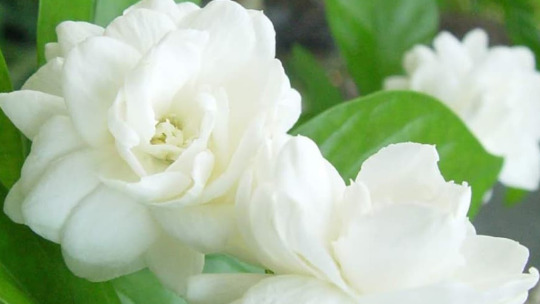
Arabian jasmine flower
This Arabian jasmine flowers are bright white, double layered, tubular, lobed oval flowers contain 9 to 10 petals has sweet & strong fragrance throughout your garden. Flowers contains two stamens with very short filaments.
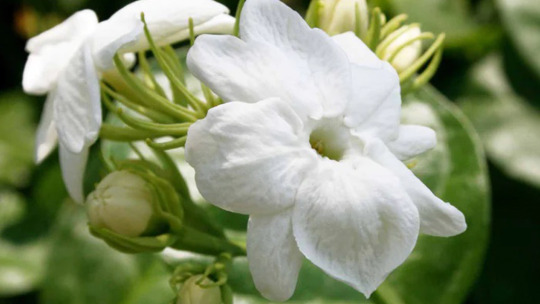
Arabian jasmine plant
Like all jasmine plant varieties, this plant is perennial evergreen with thin woody branches. Arabian jasmine plants are small shrubs with lush foliage. And its climber vines reach up to the height of 25-30 cm & spreads wide 10-20 cm. Arabian jasmine plants are native to Asia, grows healthy & excellent in all climatic conditions of India.
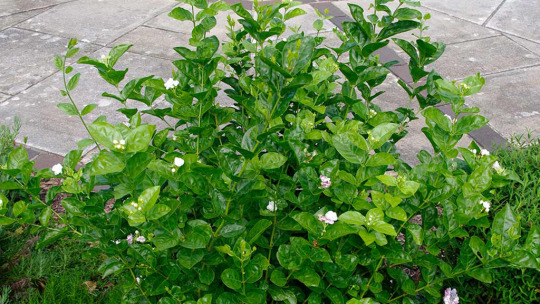
Jasminum sambac
Arabian jasmine flower has scientific name Jasminum sambac spreads rapidly as shrub or veins with upright habits. Jasminum sambac is popularly called as “Belle of India” meaning Queen of India. Presence of Scent fragrance refreshes the mind & environment.

How to grow Arabian jasmine
Arabian jasmine plants are considered as‘megastar of garden’. This can grow well in garden areas such as home garden & terrace garden. This plant can be grown in grow bags, pots or any suitable container.
Flower farmer’s most cultivated plants are Arabian jasmine plants with high yield & it is most suitable for scent preparation purposes.
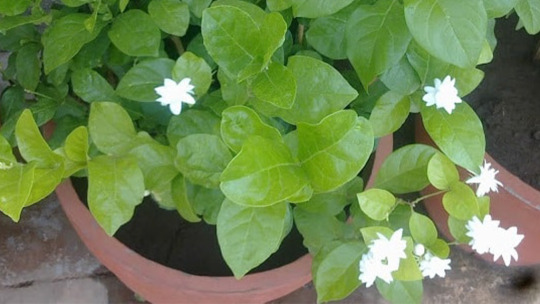
Soil
Arabian jasmine plants prefer to grow in loose, loamy, well-drained soil with some organic matter content mostly prefers to grow in acidic to slight acidic soil of pH of 4.5 to 6.9.
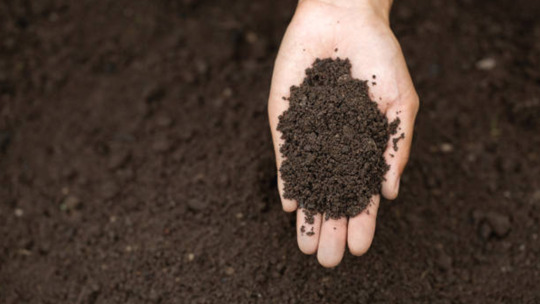
Sunlight
This plant requires ample of sun light i.e. is direct sun light of 4-6 hours. It can also tolerate in shade.

Temperature
Ideal temperature for Arabian jasmine plant is 85-90 degree Celsius during day time & in night time 70-80 degree Celsius.
Watering
Moderate to average water application is given. Alternate day water application but not to make the soil soggy & wet. Because overwatering may lead to root rot diseases. Avoid watering in winter seasons(November-December).
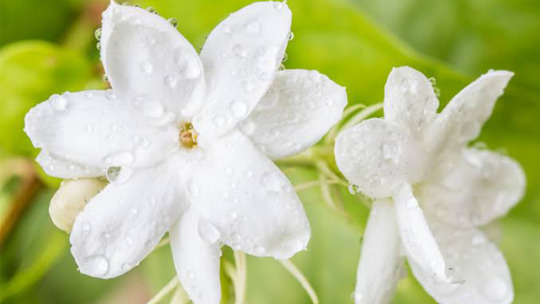
Fertilizer
Application of organic fertilizer such as vermicompost, cow manure or goat manure, Groundnut cake powder for nitrogen enhancement & to increase soil fertility.

Organic fertilizer for pest attack
Application of Neem oil, Bio-Npk, Steamed bone meal once in three months. Not to over fertilize the plants. Application of organic fertilizer given only in required quantity. Prefer to grow plants by using organic fertilizer.
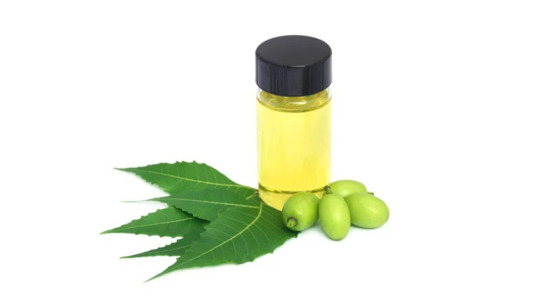
Repotting
This plant does not like to grow in too large pot, because it may lead to water stagnation. Select the pot of 3-4’’and once if the plant grows large. Transfer the plants to big size pot compared to last one but most importantly not to damage the roots.
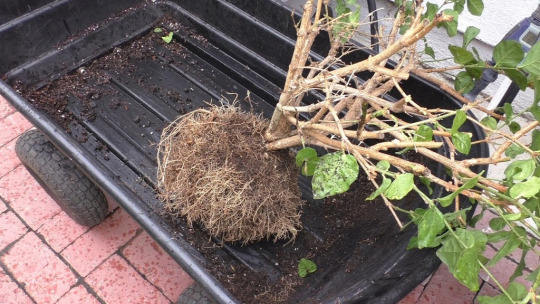
Pruning:
Prune the Arabian jasmine plants in winter, because flower blooming will be less compared to other seasons.Trim the old, diseased and matured plant parts to encourage fast growth in plants.

Harvest:
To get fresh flower yield, fully developed & unopened flower buds are hand-picked in the early morning or late evening. Probably harvesting time starts from 6 months after planting.
Life time of Jasmine plant:
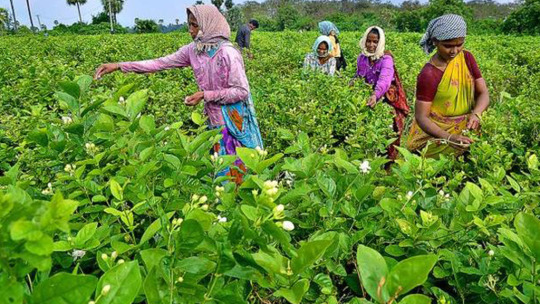
Yield:
Expected average yield of about 800-900 kg of flowers per acre. In houseplant we can expect about 1kg of flower yield.

All and above grow plants good and healthy by using organic & traditional method of practices to grow plants. Go green and make our environment clean & green.
Blog compiled by : Santhionlineplants
#ARABIAN JASMINE#Arabian Jasmine flowers are king of fragrant flowers. Jasmine are of more than 200+ varieties around the world. But Arabian jasmine occupie#Jasmine flower#Arabian jasmine flower#This Arabian jasmine flowers are bright white#double layered#tubular#lobed oval flowers contain 9 to 10 petals has sweet & strong fragrance throughout your garden. Flowers contains two stamens with very short#Arabian jasmine plant#Like all jasmine plant varieties#this plant is perennial evergreen with thin woody branches. Arabian jasmine plants are small shrubs with lush foliage. And its climber vine#grows healthy & excellent in all climatic conditions of India.#Arabian jasmine flower plant#Jasminum sambac#Arabian jasmine flower has scientific name Jasminum sambac spreads rapidly as shrub or veins with upright habits. Jasminum sambac is popula#jasminum sambac#How to grow Arabian jasmine#Arabian jasmine plants are considered as‘megastar of garden’. This can grow well in garden areas such as home garden & terrace garden. This#pots or any suitable container.#Flower farmer’s most cultivated plants are Arabian jasmine plants with high yield & it is most suitable for scent preparation purposes.#arabian jasmine growth#Soil#Arabian jasmine plants prefer to grow in loose#loamy#well-drained soil with some organic matter content mostly prefers to grow in acidic to slight acidic soil of pH of 4.5 to 6.9.#soil#Sunlight#This plant requires ample of sun light i.e. is direct sun light of 4-6 hours. It can also tolerate in shade.#Temperature#Ideal temperature for Arabian jasmine plant is 85-90 degree Celsius during day time & in night time 70-80 degree Celsius.
3 notes
·
View notes
Text
Jasmine Sambac: A Fragrant Treasure of the Tropics
Jasmine Sambac, scientifically known as Jasminum sambac, is a beloved flowering plant cherished for its intoxicating fragrance and elegant blooms. Commonly referred to as Arabian Jasmine or Sampaguita, this species is native to tropical regions of Asia, including India, Myanmar, and the Philippines. Its popularity extends far beyond its native range, captivating hearts and senses worldwide.
Appearance and Characteristics
Jasmine Sambac is a versatile evergreen shrub or vine that can reach heights of up to 6 feet (2 meters). It boasts glossy, dark green foliage and produces clusters of small, waxy, white flowers. Each flower features delicate petals that unfurl to reveal a heavenly fragrance, especially pronounced in the evening. The blossoms often bloom year-round in warm climates, adding a touch of elegance to gardens, balconies, and indoor spaces.
Fragrance and Cultural Significance
The fragrance of Jasmine Sambac is legendary, renowned for its sweet, floral aroma with hints of citrus and spice. Its captivating scent has inspired poets, perfumers, and lovers throughout history. In many cultures, Jasmine Sambac holds deep cultural and symbolic significance:
Traditional Uses: In several Asian countries, Jasmine Sambac is revered for its symbolic importance. In the Philippines, it is the national flower and is used in religious ceremonies, weddings, and festivals. In India, it holds sacred significance and is often offered to deities and used in wedding rituals.
Perfumery: The essential oil extracted from Jasmine Sambac flowers is highly prized in the perfume industry. Its rich, floral scent adds depth and allure to many perfumes and fragrances, both as a standalone note and in blends.
Medicinal Properties: In traditional medicine systems such as Ayurveda, Jasmine Sambac is valued for its therapeutic properties. It is believed to have calming and aphrodisiac effects, promoting relaxation and emotional well-being.
Cultivation and Care
Jasmine Sambac is relatively easy to cultivate, provided it receives the proper care and growing conditions:
Sunlight: Plant Jasmine Sambac in a location with full to partial sunlight. It thrives in warm, sunny conditions but can tolerate some shade.
Soil and Watering: Ensure well-draining soil with regular watering, especially during the growing season. Avoid waterlogged conditions, as they can lead to root rot.
Pruning and Maintenance: Regular pruning helps maintain the shape and size of the plant, encourages bushier growth, and removes dead or diseased branches.
Protection from Frost: While Jasmine Sambac prefers warm temperatures, it can tolerate occasional light frost. In colder climates, it's best to grow it in containers indoors or provide protection during winter months.
In Conclusion
Jasmine Sambac is more than just a plant; it's a symbol of beauty, romance, and tradition. Whether adorning gardens, perfuming the air, or gracing ceremonial occasions, its exquisite blooms and enchanting fragrance leave an indelible impression on all who encounter it. Embrace the allure of Jasmine Sambac and let its timeless elegance elevate your surroundings and spirit.
0 notes
Text
Arabian Ranches: An Oasis in the Desert
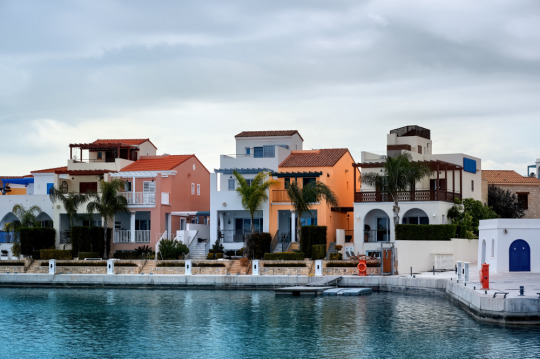
In the desert just outside Dubai, Arabian Ranches is among the most popular and exclusive communities in the United Arab Emirates (UAE). Known for its lavish villas, championship golf courses, and family-friendly amenities, Arabian Ranches offers a luxurious suburban lifestyle against the backdrop of the arid Arabian landscape.
Overview of Arabian Ranches
Arabian Ranches was established in 2002 by Emaar Properties as a master-planned community spanning over 10 million square feet. The community contains over 2,000 Spanish-Mediterranean-style villas, as well as townhouses and apartments set amidst lush landscaping. Residents enjoy three championship golf courses, a polo and equestrian club, community parks, schools, shops, restaurants, and other amenities contained within the closed community walls. Arabian Ranches is divided into distinctive sub-communities with names like Mirador, Alma, Al Reem, Saheel, and Desert Iris, each with its own style and ambiance. Home prices in Arabian Ranches range from AED 2 million for a townhouse to over AED 20 million for a luxury villa.
Is Arabian Ranches 3 a Good Investment?
Arabian Ranches 3 is the latest expansion of the Arabian Ranches community, offering an additional 457 villas and townhouses. Launched in mid-2021, Arabian Ranches 3 features five new residential neighbourhoods - Lotus, Orchid, Lily, Jasmine, and Hibiscus - with homes ranging from 3 to 6 bedrooms. Villas feature contemporary architectural designs with open layouts, floor-to-ceiling windows, private gardens and pools.
Real estate experts widely regard Arabian Ranches as one of Dubai’s most desirable and exclusive communities. Arabian Ranches consistently experiences strong home buyer interest and solid price appreciation year after year. The average villa value has increased from AED 2 million in 2014 to AED 3.5 million today, representing over 50% price growth in 8 years. In 2021, Arabian Ranches ranked as Dubai’s neighborhood with the highest rate of price growth.
The recently completed Arabian Ranches 3 looks poised to follow the footsteps of its predecessor. With its family-friendly environment, resort-style amenities, and sense of community, demand for Arabian Ranches remains high while new supply is limited. Investors and end-users alike consider Arabian Ranches a safe long-term bet for capital appreciation and a high quality of life. In summary, Arabian Ranches 3 represents an excellent investment opportunity.
Is Arabian Ranches 3 Completed?
Yes, Arabian Ranches 3 was completed in 2021. Emaar officially announced the project sell-out and completion of all homes in October 2021. The community is now fully occupied by residents.
Arabian Ranches 3 took approximately 2 years from launch to completion. Construction began in early 2020, with the initial home deliveries occurring at the end of 2020. Through 2021, the remaining houses and amenities were finished in phases. The final touches - including the landscaping, retail areas, sports facilities and community center – were put into place by the project’s conclusion in Q4 2021.
In total, Arabian Ranches 3 added 457 luxury homes featuring Mediterranean and Spanish colonial designs to the established Arabian Ranches community. The new development includes villas with 3 to 6 bedrooms, all with private pools, yards, and indoor/outdoor living areas. The five neighborhoods – Lotus, Orchid, Lily, Jasmine and Hibiscus – each have their own architectural personality. As the second expansion of Arabian Ranches, Arabian Ranches 3 has seamlessly blended into the surrounding community with access to the existing facilities and lifestyle offerings within Arabian Ranches.
How many Arabian Ranches are there?
There is only one Arabian Ranches community, which is divided into three phases:
Phase 1:Arabian Ranches
Phase 2: Arabian Ranches 2
Phase 3: Arabian Ranches 3
Originally launched in 2002, Arabian Ranches Phase 1 covers the majority of the community with over 2,000 Spanish-style villas and townhouses, the main commercial center called Arabian Ranches Souk, multiple parks, nurseries, schools, mosques, restaurants, fitness centers and the three signature golf courses.
In 2015, Arabian Ranches 2 launched as an extension of the original community, providing an additional 184 homes.
The latest iteration, Arabian Ranches 3, was completed in 2021 with over 450 luxury villas and townhouses in five new neighborhoods. This marked the conclusion of Arabian Ranches build-out.
In summary, a single master-planned development known as Arabian Ranches now consists of three completed phases over an approximate 20 year build-out timeline by master developer Emaar Properties. The entire community is interconnected with complimentary Dubai-Spanish architectural styles and every phase has access to the lifestyle amenities, retail stores, services, and country club found throughout Arabian Ranches.
Is Arabian Ranches Expensive?
Yes, compared to other communities in Dubai, Arabian Ranches is widely considered a luxury and premium suburb with higher priced villas and cost of living. Several factors contribute to the expense of Arabian Ranches:
Prime Location: Arabian Ranches proximity to main highways, Downtown Dubai, and attractions like Dubai Miracle Garden makes it a prime location that commands higher values.
Prestige: As one of Dubai’s most prestigious addresses, living in Arabian Ranches affords a certain elite status that buyers are willing to pay more for.
Limited Supply: With limited villa supply and extremely low availability, competition is fierce among buyers, allowing sellers to demand higher prices.
High Demand: Arabian Ranches remains exceptionally popular with residents and investors year after year, further enabling sellers to ask higher prices due to excessive demand.
Luxury Living: From championship golf courses, Polo clubs, and 5-star resort style amenities, Arabian Ranches is synonymous with luxury, exclusive living, that comes at a premium cost.
Premium Build Quality: Large plot sizes, private gardens and pools, customized luxury villa designs using premium construction materials all contribute to home values that eclipse other communities with smaller or less personalized real estate products.
In summary, owning property in Arabian Ranches requires having a relatively high budget compared to other parts of Dubai. Villa prices now average AED 3.5M+ with some luxury estate homes exceeding AED 20M. The associated country club membership fees, school tuitions, retail expenditures and cost to maintain larger houses also requires significant income and assets. While expensive, Arabian Ranches remains an aspirational community that delivers an unmatched lifestyle experience for those who can afford it.
0 notes
Text
Expert Advice on Growing and Maintaining Beautiful Jasmine Flowers
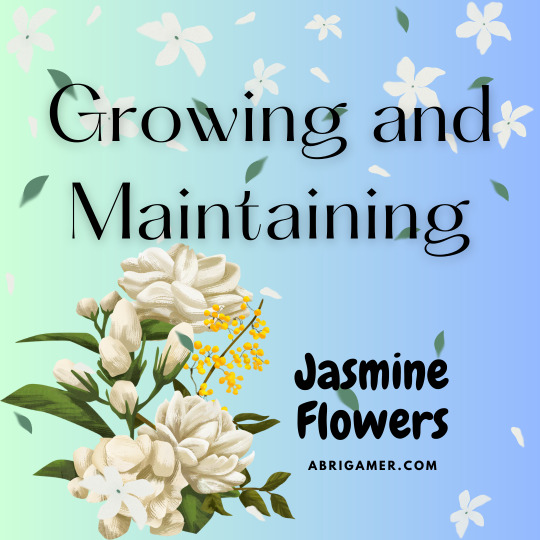
Jasmine flowers are admired for their delicate beauty and sweet fragrance. They are relatively easy to grow and take care of, even for beginners. In this beginner’s guide, we will provide some basic tips on growing and caring for beautiful jasmine flowers.
Jasmine flowers are known for their sweet fragrance and delicate appearance. They are popular in gardens all over the world, and with good reason. Not only are they beautiful to look at, but they are also relatively easy to grow and maintain. In this blog post, we provide some expert advice on growing and maintaining beautiful jasmine flowers.
- Choose the Right Type of Jasmine Flower
- Planting and Soil for Jasmine Flowers
- Watering and Fertilizing for Jasmine Flowers
- Pruning for Jasmine Flowers
- Pests and Diseases for Jasmine Flowers
- Harvesting Jasmine Flowers
- Expert Advice on Growing and Maintaining Beautiful Jasmine Flowers- Choose the Right Soil
- Plant in the Right Location
- Water Regularly
- Fertilize Regularly
- Prune Regularly
- Watch for Pests and Diseases
- Conclusion

#image_title
Choose the Right Type of Jasmine Flower
There are several types of jasmine flowers, including common jasmine, night-blooming jasmine, and Arabian jasmine. Common jasmine is the easiest to grow and care for, making it a great choice for beginners. Arabian jasmine is popular for its strong fragrance, but it requires more care than other types.
Planting and Soil for Jasmine Flowers
Jasmine plants require well-draining soil with a slightly acidic pH between 6.0 and 7.5. Before planting, loosen the soil and mix in organic matter, such as compost or aged manure, to improve drainage and nutrient content. Plant your jasmine flowers in an area that receives at least six hours of direct sunlight daily.
Watering and Fertilizing for Jasmine Flowers
Water your jasmine plants regularly to keep the soil moist but not waterlogged. Potted plants should be watered more frequently than those planted in the ground. Fertilize your plants once a month during the growing season with a balanced fertilizer, but be careful not to over-fertilize, as this can cause damage to the plant.
Pruning for Jasmine Flowers
Prune your jasmine plants after flowering, immediately removing any dead or diseased branches and shaping the plant as desired. Regular pruning will help maintain the plant’s shape and encourage new growth.
Pests and Diseases for Jasmine Flowers
Jasmine plants are usually resistant to pests and diseases, but they can still be affected by spider mites, aphids, and whiteflies. Treat any infestations with insecticidal soap or neem oil, being careful not to use any products that may harm beneficial insects like bees.
Harvesting Jasmine Flowers
- Best time of day and season to harvest jasmine flowers
- Proper techniques for harvesting and drying flowers
- Creative ways to use harvested jasmine flowers, such as making tea or perfume
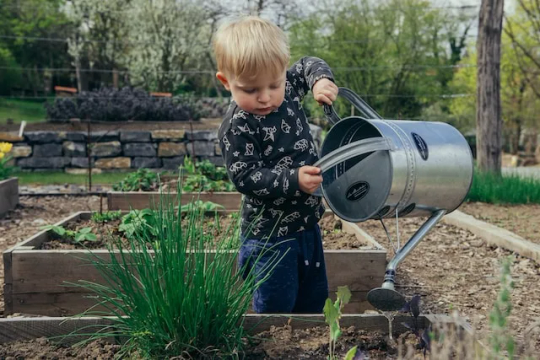
#image_title
Expert Advice on Growing and Maintaining Beautiful Jasmine Flowers
Choose the Right Soil
The first step in growing beautiful jasmine flowers is to choose the right soil. Jasmine plants prefer well-draining soil that is slightly acidic. If the soil is too alkaline, the plant may not thrive. You can test the acidity of your soil with a soil test kit, which can be purchased at most garden centers. If your soil is too alkaline, you can lower the pH by adding sulfur or peat moss to the soil.
- Overview of different jasmine varieties and their unique characteristics
- Factors to consider when choosing a jasmine variety, such as climate, sun exposure, and soil type
Plant in the Right Location
Jasmine plants prefer full sun, but they can also tolerate some shade. When choosing a location, make sure the plant will get at least six hours of direct sunlight each day. Additionally, jasmine plants do well in areas with good air circulation. If you live in an area with high humidity or stagnant air, you may need to plant your jasmine in an area with more airflow.
- Best time of year to plant jasmine flowers
- Soil preparation tips, including soil type and pH level
- Watering and fertilization recommendations
Water Regularly
Jasmine plants need regular watering, especially during the growing season. The soil should be kept moist, but not waterlogged. You can water your plants once or twice a week, depending on the weather conditions in your area. If you live in a particularly hot or dry climate, you may need to water your plants more frequently.
Fertilize Regularly
Jasmine plants benefit from regular fertilization. Use a balanced fertilizer that contains equal amounts of nitrogen, phosphorus, and potassium. You can fertilize your plants once a month during the growing season. Be sure to follow the instructions on the fertilizer package carefully, as over-fertilization can damage the plant.
Prune Regularly
Pruning your jasmine plants can help keep them healthy and beautiful. Prune the plants immediately after flowering to encourage new growth and prevent the plant from becoming too woody. You can also prune the plant during the growing season to shape it and remove dead or diseased branches.
- Proper pruning techniques to promote healthy growth and flowering
- Common pests and diseases that affect jasmine plants and how to treat them
- Tips for promoting optimal flowering and fragrance
Watch for Pests and Diseases
Jasmine plants are relatively resistant to pests and diseases, but they are not immune. Keep an eye out for common pests such as aphids, spider mites, and scale insects. If you notice any signs of pests or disease, treat the plant immediately with an appropriate pesticide or fungicide.
Conclusion
Jasmine flowers are a beautiful addition to any garden, and with some basic care, they can thrive and provide a sweet fragrance for years to come. Remember to choose the right type of jasmine for your needs, plant in well-draining soil, water and fertilize appropriately, prune regularly, and watch for pests and diseases. By following these simple steps, your jasmine flowers will be a source of enjoyment and beauty in your garden, even as a beginner gardener.
Jasmine flowers are a beautiful and fragrant addition to any garden. By following these expert tips, you can grow and maintain healthy jasmine plants that will bloom year after year. Remember to choose the right soil, plant in the right location, water and fertilize regularly, prune regularly, and watch for pests and diseases. With a little bit of care and attention, your jasmine plants will thrive and provide you with beautiful blooms for years to come.
See also,
Top 10 Gardening Flowers to Beautify Your Home
10 Easy Steps to Grow Marigold Flowers in Your Home in 2023
Beginner’s Guide to Growing and Caring for Beautiful Hibiscus Flowers
Check on Amazon Jasmin Plants
Read the full article
#growingjasmine#JasmineFlowers#jasmineplant#jasmineplantindoor#jasmines#nightjasmine#PlantingJasmine#raatkiraniplant
0 notes
Text
The exotic scents of Arabic perfumery captivate.
With a solid culture about fragrance, Arabic practices play had a significant impact in the improvement of the European perfumery .Flavors, pitches, colourful woods, spices or even creature fundamentals oils as ambergris or musk are a portion of the crude materials that Arabic perfumery has customarily used to make captivating aromas. Besides, blossoms and plants like rose, jasmine or orange blooms are and have been generally remembered for Arabic scents.
The Islamic culture has been utilizing perfumery profoundly connected to religion. First employments of perfumery are recorded back in the VI century. Numerous Arabian families get ready what is called bakhoor, sort of incense that is utilized to cleanse their homes. Each family has generally got their own bakhoor's fragrance as they can blend golden, musk, sugar, and so forth to get a "glue" that is dried at the sun getting thus a square. The square is partitioned in more modest pieces and afterward consumed, creating a smoke which scents the entire room.
Shouldn't something be said about fine scents? The most well-known oriental fragrance is made of Mukhalat, a blend that contains as primary fixings: oudh, roses, saffron and sandalwood.
Oudh
It is the resinous heartwood from Agar tree. Solid trees have an unscented wood. Nonetheless, some more seasoned trees become tainted with growths from there on an oleoresin is delivered inside the wood. As the contamination develops, it brings about an exceptionally rich dull pitch inside the heartwood. The tar is refined, getting the unadulterated oil of oudh.
Rose
It isn't just a delightful bloom yet in addition a fundamental fixing in Mukhalat. Rose Damascena is a crossover rose, local of Persia, conveyed to Syria and afterward brought by a crusader from Damascus to Europe. Damascus Roses just sprout for thirty days every year and the blooms are as yet picked independently. The picking is consistently a race against the sun on the grounds that as the temperature rises, the blooms lose their fundamental oils. Five tons of blooms are expected to deliver one kilogram of oil!
Saffron
This blossom has got three marks of shame, which are dried and utilized in cooking and in perfumery. Saffron is the most costly zest by weight. These days is delivered in iran, Spain, India, Greece, Azerbaijan, Morocco and Italy. This zest is utilized widely in Indian perfumery and furthermore in the Middle East and presently starting to be utilized in Western perfumery.
Sandalwood
It is the wood from the Santalum tree. The sandalwood from Mysore, locale of Karnataka, Southern India, is viewed as of the greatest quality accessible. Notwithstanding 4000 years of presence, the sandalwood quintessence just showed up in current perfumery somewhat recently. Sandalwood has additionally assumed a significant part in Hindu and Buddhist strict customs and it is likewise utilized in Chinese medication in light of its recuperating properties.
The primary element in Arabic fragrances is its erotic nature, exoticism and extreme aroma. At Marcolinia we deliver fragrances, scent, Unisex perfumes in UAE and Arabic aromas are normally more extraordinary and more grounded, because of the way of life and furthermore because of the warmth. At present, patterns in Eastern market incorporate some new fixings like nectar, chocolate or vanilla.
#unisex perfumes#marcoliia uae dubai perfume fragrance brandedperfume onlineperfumestore#buy perfumes for women
5 notes
·
View notes
Text
In defense of Princess Jasmine

Apologies for this being late.
So where do I start with this one? I guess after seeing the reactions about the Aladdin movie, and then seeing how people changed their tune, and it got to me, a bit more. See Aladdin has a special place in my heart, being the Disney Animated movie that I connected to the most. It’s my favorite followed by Robin Hood and the Black Cauldron, and when I was reading the reaction to Jasmine, I was rather surprised by some of the hostility, since the whole place is an amalgam of different cultures and the original story itself seems to be a mixed story as well.
I have to say this though, Jasmine, in Aladdin, isn’t the lead. Her role is important, and clearly a huge part of the overall story for Aladdin, but she’s not the main lead. This story wasn’t about her learning and changing, although she does, but about Aladdin learning to be himself. So it’s weird when people lambast Jasmine about the movie, but ignore her more prominent role in the animated show, which is part of the cannon. It’s also strange to me that she gets hit with a lot of comments that you would fling at a lead character, but her role is more akin to the roles of the Princes in the Disney Movies. Jasmine is, for the most part, like Jane from Tarzan, and a character that aids Aladdin in maturing and becoming the person that he needs to be, rather than the lead herself. This drastically changed in the new movie, as she’s become a sort of a co-protagonist in the story.
So where to start here I guess on one of the bigger things I hear about Jasmine:
1. Jasmine is too sexy for a teenager.

Here’s the thing, Jasmine isn’t a teen, or at least that’s not what was in the movie. Her father specifically says “You must be married, to a prince, by your next birthday.” Leaving it open to guess what her birthday is. In recent years the Princesses Line gave her the age of 16, so while it’s official it’s not official (I know weird), whereas it’s hinted that Aladdin himself is 18 at oldest. The thing is that her outfit, while not traditional or historically accurate, is based more on the older idea of Arabian style costumes associated with Hollywood. Look at any of the movies from the late 1930s and into the 1970s and you’ll see that the designs for Jasmine’s outfit seem to be very much in line from the old swashbuckling epics of that period.

Jasmine, for the most part, doesn’t act sexual at all in the movie. Rather most of the time she’s actively trying to learn more about her people and the world outside of the palace. Allowing for her tiger to tear off the pants of the young prince, sneaking out against the rules of her father, and easily following Aladdin around the city, “I’m a fast learner.” Showing that she has a great deal of wit and intelligence for someone raised in a “gilded cage.”

The only time she uses her sexuality is as a distraction for Aladdin and the reaction to her kissing him is one of utter disgust from other members of the hero’s band, Genie with the Jaw drop, Abu with an “eww” sound, and Aladdin himself in some state of shock. Showing that this was not something that could be seen as a sexualized thing, more of something that would be seen as “gross” to those that were seeing it and clearly not the most appetizing thing for Jasmine to do herself. Moments later we see her actively trying to pull the snake scepter away from Jafar, indicating that she’s willing to put herself in harm's way to save her friends, and it’s only when he knocks her back and traps her in a sand hourglass, that Jasmine isn’t willingly trying to find ways to get out of her situation. She’s constantly, prior to Aladdin and the others coming in, making faces that show she’s utterly disgusted with Jafar, and it’s clear that the outfit he has her it is for his own amusement to humiliate her. The look is actually one that matches the outfits worn by the girls in, what appears to be, a brothel of sorts, that we meet early on in the movie during the ‘One Jump song’.
Therefore, at no time does Jasmine willingly flaunt herself, or act overtly sexual in the movie, outside of the one distraction scene.

Jumping over to the TV show, we see her actively fight alongside her friends, and the only time she’s wearing an outfit that’s similar to the look for what she wears in Jafar’s throne scene is the black outfit that she starts to wear during the time she’s being controlled by Mozenrath and believes she’s a bad guy. Then later that’s used for sneaking around on covert missions where black would be the look that would work best during night.
2. Jasmine is always in danger and needs saving.
The only times this at all happens in the movie is really when she is threatened to have her hand cut off, and later when she’s trapped inside a sand hourglass and is going to die from suffocation.

Never once, in the show, or the movie, does Jasmine gives up and not try to fight for herself. In the movie, outside of those two instances, Jasmine is always ready to stand up for herself and others. Even if it means getting into trouble. For example, in the moment when the vender is threatening her before Aladdin comes in, she tries to explain why she did what she did, and even after she’s grabbed she tries to pull away from him. Later in the Hourglass she’s banging on the glass and looking for ways to get out, up until she’s completely buried in the sand. When she and Aladdin are being chased, she actively pulls off her disguise in order to save him, and later goes to confront Jafar chastising him for his actions and reminding him that once she’s the queen she’s getting rid of him, and he knows it, “Or worse beheaded.”

Jasmine doesn’t screw around, in the show she actively fights with a sword, got into a full-on tussle with Sadira (a fellow enemy turned friend). Worked insanely hard to try to undo a curse on herself as she’s turning into a Snake and was willing to let Aladdin go to allow him to not have to deal with the pain she was dealing with turning into a snake. She’s fought with not only Mozenrath but saved Aladdin a number of times in the show, along with her father.

Jasmine, I would say, is the most adventure driven of the Princesses, outside of say, Kida, and possibly Moana, and Mulan. So the idea that she needs to be saved seems out of place to me.

The thing about Aladdin is that a good part of the movie seems to be focusing on movie musicals from the 1950s in regard to the story structure and aspects about it. Modern viewers tend to ask why a lot of the movie doesn’t seem to focus on the traditions of the location where it’s supposedly taking place from. One of the reasons, I think, is because it’s supposed to invoke that sort of movie from that period of time. It’s not supposed to be a classic piece based on tradition, rather it’s designed to be an ode to the Hollywood epics of yore with, at the time, a more modern twist in regard to how American and western audiences at the time viewed roles for boys and girls in various ways. By the end of the movie, the Sultan has learned that some traditions need to be bucked and changed to bring his kingdom forward into a modern age where his daughter can have some control over her destiny. In the newest movie, along with the musical, that’s been pushed even farther by outright saying that Jasmine will be ruler and Aladdin is Prince Consort, making her very much like the Queen of England and her husband.

What’s interesting to me is that not enough people look to the animated series to see the growth of the characters from the movies. Jasmine advances more in her development here, learning about her people and the kingdoms around her. She’s shown to be far more willing to listen to things, and be less stubborn than her father, and can actually explain things to him. As per the episode where she was taken by a “god” like being who the Sultan took a rose from, and, upon his defeat, after Jasmine had spent time with him, she expressed grief over his loss and that her father’s actions were really in the wrong, and that he should learn from others rather than assuming that they were monsters, to begin with. It’s a story that has a lot going on with it and a strong message for kids.

Jasmine, by the time the Forty thieves movie has come about, is older and wiser, and she’s able to fully understand Aladdin’s desires to find out about his father and bring him to their wedding. This is not the same girl that snuck out of the palace from the first movie, this is a young woman who’s matured enough to understand how family is an important part of her husband’s life and his need to know where he comes from. This is something I don’t think enough people actually look into when they start writing about how Jasmine is not a good role model.

Another thing about Jasmine is that like Philip before her, she rejects the notion of how the world is working right now. She wants to connect to her people and even falls in love with a boy who is poor and below her station. While yes Aurora is a princess, this is not something he knew about when he fell for her, and the same is for Aladdin. Jasmine falls for him even though she actively knows he’s beneath her station and the reaction from her in regard to all this is “I want to marry for love,” which would mirror Phillips “Father it’s the 14th century,” showing that both view the idea of being in love and married for love over an arranged union as a stronger and better thing in their version of the modern world.

It’s something that makes Jasmine unique among all the other princess, excepting Kida, in that she is not the main character in the story. Or rather she, like Philip, plays a significant role, but her story is on the side and is important, but the changes the viewpoint we mostly go through is Aladdin’s. As with Atlantis, Milo is the main POV, and Kida is the character that comes in to explain what we’re seeing. The only character I can think of that follows this idea is Esmeralda, who, again, plays a huge role in the story but isn’t the main POV of the story of the Hunchback. It’s something that Jasmine has that makes her aspect in the following animated show more interesting as a number of episodes are from her POV and show her as The protagonist in the Animated series. We see her grow alongside Aladdin, wherein the movie, she does grow some in her character, in that she learns about trusting in some ways, it’s more about him and his story.
#in defense of#disney princesses#princess jasmine#aladdin#aladdin the series#mozenrath#jasmine#essay
82 notes
·
View notes
Photo

Did you know that coffee flowers smell just like Jasmine? Native to mountainous regions of southeastern Sudan, Ethiopia, and Yemen, where the plant grows wild as an understory tree. The cultivation of coffee began in Yemen around 900 AD, from there spreading over the Arabian Peninsula and Eastern Africa and, in the sixteenth century, to Europe. The seeds of ripe drupes, after being separated from the pulp, are dried, roasted, ground, and brewed to prepare the ubiquitous stimulating drink consumed worldwide. Coffee extracts are used to flavor ice cream, sweets, liquors, and pastries like my doughnuts 🙃 Coffee seeds are a source of caffeine, which is used as a stimulant and as an additive in diet pills and pain medicine. In Africa, a fermented drink from the pulp of ripe fruits is consumed, and the seeds are baked in butter to make a rich flat cake. ・・・ #growninhaiti #coffee #arabica #arabicacoffee #coffeaarabica #haiti #ayiti #flowering #flowerpower #fragrant #growth #abundance #selfsustainable #foodforest #agroforestry #nogmos #nopesticides https://www.instagram.com/p/B8G7UmRFMLz/?igshid=wv1mxjrwblrg
#growninhaiti#coffee#arabica#arabicacoffee#coffeaarabica#haiti#ayiti#flowering#flowerpower#fragrant#growth#abundance#selfsustainable#foodforest#agroforestry#nogmos#nopesticides
2 notes
·
View notes
Text
Guess Who Saw the Live-Action Aladdin Finally?
Not a liveblog, but I did want to share my reactions/notes and may do a full delving into it later! (Also hi everybody, not dead, just super busy and poor!)
All in all, I liked it, and I thought it was a better adaptation than live action Beauty and the Beast. Spoilers and commentary under the cut:
- I liked Will Smith as Genie; he had a pleasant singing voice and that was a surprise since I’m just used to him as a rapper. I do think there are places in his songs where I wish he went harder, especially in Friend Like Me, but it seems like the movie decided his showstopper was going to be Prince Ali instead.
- I actually don’t think anybody was miscast in this movie, on that note. I enjoyed everybody.
- I first looked at this movie and wondered whether Alan Tudyk would be playing Iago as a person the way Gilbert Gottfried did or if he’d be making bird noises, and I came to find it was a mix of the two. His characterization and his speech abilities and patterns were actually super reminiscient of Xerxes, and on that note:
- Jafar and Iago read as very akin to Mozenrath and Xerxes in this movie, to me. Jafar is younger, which -- at least makes his desire to marry Princess Jasmine (who is 16 at the youngest [in the novelization] and 18 at the oldest [most other places] in the original, depending on sources) far less barfy and gross. He has a higher body count than Jafar in the cartoon, and the little bits of characterization he’s given suggest that he has sacrificed much and killed many in pursuit of what power he already has. His desperation for this to be recognized and respected just rang as very Moze and was NOT the place he was coming from in the original movie.
- The parallels deliberately drawn between Jafar and Aladdin made for the most interesting thing in the movie and it made Aladdin’s conflict and need for character growth a lot more dynamic. Jafar is a former thief and stands as an example of what Aladdin could become if he goes down the wrong path. Genie differentiates between Aladdin and that guy, and that guy is somebody Genie’s met a thousand times already. He knows the signs and he knows when Aladdin is headed down that road. And Aladdin starts to go down that road when he considers not freeing the Genie with his third wish. It’s not just that he is afraid of Jasmine finding him out; it’s that he’s gotten a taste for his new identity and wants more.
- Jasmine. Jaaaaaasmine. Gets so much more to do in this movie and got her own arc. She wants to be diplomatic. She wants to help her people. What’s more, her motivation isn’t “I want to marry for love” it’s “I am not interested in being married. I want to be the Sultan so I can help my people.” She is bred for office; she wants to rule and she wants to make her kingdom better, and she never wavers in this. Her arc is not completed when the Sultan changes the law about marriage for her -- it’s completed when the Sultan makes her the new Sultan and says whether she gets married and to whom is now her decision because she makes the laws. She also got her own I Want song and it’s short but substantial. (I was confused when she reprised it after Jafar’s takeover and suddenly guards started disintegrating around her because it’s not immediately clear we’re in her head so I’m going when did she get super powers)
- Carpet was animated so well in terms of movement that the character translated as the same character from the original, and that in itself is impressive.
- On that note, VENGEANCE FOR CARPET.
- I want to welcome Frank Welker back as like, the ONLY actor to reprise their roles. And a special welcome back to his Megatron voice when he spoke (read: screamed) as the Cave of Wonders.
- So did Genie lose all his powers at the end of the movie? I don’t feel like this is clearly communicated.
- Also just like the original film, they forgot about their storytelling bookend. And that’s a shame because it should have ended with the kids asking their dad if he still had any magic and there just being a kind of a wink and a smile as he goes back to work, and then him using some to subtly mend a sail or something else while they’re not looking, shooting the audience a knowing look, etc. Woulda been better, that’s all I’m saying.
- Genie and Dalia was cute but completely underdeveloped and they jumped to “let’s run away and get a boat and have babies” really fucking quick. Ali has been there like two days, slow your roll.
- I think the Sultan was underdeveloped here. I liked where they went with him. I liked seeing a severe and wise Sultan and not a manbaby parody, because it also shows how much more sinister Jafar’s power is? But he didn’t get enough to do, and there’s a lot of TELLING us that he won’t let Jasmine go out because he’s afraid for her after his wife dying, but we’re not really shown and there should have been a scene where we saw him wrestle with that a bit.
- I get what they were doing by jumping right to Jasmine in the marketplace with Aladdin and I think the way they did it let the two develop and grow together a little more, but it’s still a little rushed.
- Making the first Cave of Wonders scene part of the montage in Arabian Nights was a mistake and it made me feel like they were counting on you having already seen the movie. I almost suspect that there’s a longer version of this scene somewhere and they trimmed it down to make it less scary.
- I said it’s better than the live action Beauty and the Beast because it closed virtually every character arc as opposed to forgetting them/disregarding them completely, among other things.
18 notes
·
View notes
Text
Indian Plants
Due to India's large size and different climates and seasons, it can produce over 15,000 flowering Indian plants species. Although you can find beautiful flowers in India year round, the spring and summer produce some of the most popular flowers. Indian flowers not only look pretty but their religious and cultural significance give the people of India an immense sense of pride. In conjunction with their religious and cultural importance, many Indian flowers also have strong medicinal properties. Lotus is considered to be the national flower of India, but there are a ton of other flowers throughout the country.
Summer Flowers in India
India is known for its beautiful gardens that are packed with many lovely and unique flowers. Thousands of flowers are cultivated every year and are used for special occasions and are even shipped out through foreign trade. There's a lot to learn and see in India, but many tourists love to look at the flowers that grow in this beautiful land.
The flowers can be split up into both summer and winter categories. Throughout the summer, one can find a variety of flowers such as marigolds, lotus, roses, hibiscus, sunflowers, lilies, zinnias, petunias, pansy flowers, tulips, dahlias, pineapple lily, gloriosa lily, peonies, daffodils and bougainvillea.
Popular Summer Flowers
Marigolds are considered to be one of the most popular and recognizable summer flowers in India. Also known as Caltha, Genda, garden marigold, gold-bloom, holligold, marybud and pot marigold, the marigold grows from July to September. Bright yellow and orange marigold flowers are used throughout India for many cultural and religious reasons. Garlands can be made to offer to the Hindu gods and goddesses.
Marigolds are also used to treat ulcers, menstrual cramps, eye infections, inflammations and wounds. They're known to keep mosquitos, bugs and rodents away because marigolds are a natural bug repellent. Many farmers plant marigolds near their crops to keep these pesky bugs off their land.
Indian lotus is also known as Ambal, Thamarai, Suriya kamal, Padma, Ambuja, Pankaja, Blue lotus, Sacred Water lily, bean of India, Kamala, Kanwal and Kamal. The lotus is a water plant. It has broad floating leaves and long stems and is a bright and fragrant flower with overlapping petals. The flowers are a rosy pink shade with some white shades.
What's so beautiful about the lotus flower, besides the fact that they come in a variety of shapes, is that the flower opens in the morning and the petals fall in the afternoon. Lotus seeds, which are edible, are believed to help the kidney, spleen and heart and aid in restfulness, palpitations, insomnia and liver disorders.
Other Summer Flowers
Rose is also known as Dublin Bay, Impatient, Gul, Gulbahar, Hravart, Roosevelt, Vartan, Arrosa, Aygul, Oklahoma Hulthemia, Hesperrhodos, Platyrhodon, Banksianae, Carolinae, Pimpinellifoliae, Rosa, Laevigatae and Gymnocarpae. These flowers come in white, pink, maroon, red, yellow and orange. Roses are known to be beautiful flowers, but hips, the fruit of roses, are a good source of vitamin C, the rose petals can be used to help dry and patchy skin and rose herbal tea is said to treat cold and coughs.
Hibiscus is the signature flower of subtropical regions. This flower needs a lot of sunlight and room to grow.
Sunflowers are bright yellow and can survive extreme phases of heat. They prefer not to be overwatered.
Different Types of Lilies
There are a variety of lilies in India, including the pineapple lily and the gloriosa lily. Lilies can withstand very extreme weather conditions. In the winter, lily plants and leaves will wither, but don't get rid of this plant. The bulb remains dormant throughout the winter but will bloom again the following season. They're very low maintenance flowers that look great in a garden or one's home.
The pineapple lily isn't really a flower you'd see growing in a garden. This lily is actually a member of the asparagus family, not the pineapple family. You can use this flower as a centerpiece or in a flower bed.
The gloriosa lily is a climber plant, so it looks beautiful draped over poles in a yard. Be careful with this lily though. It's very poisonous and shouldn't be consumed.
Variety of Colored Plants
Zinnia comes in a variety of colors. They love to grow in the late summer, and because they're very fragrant, they attract butterflies.
Just like Zinnia, petunias also come in a variety of colors including pink, red, yellow, orange and white. Petunias are considered a favorite amongst amateur gardeners because they're very easy to grow.
Bougainvillea Indian Flower
Bougainvillea, also known as the paper flower, is a favorite woody scandent shrub. The shrub can grow up to 10 to 15 feet high, and the flowers come in a variety of colors such as red, purple, orange, white, pink and cream. The leaves have an oval outline, are a vibrant green and have smaller leaves with tubular flowers. The trunk is twisted and the stem has sharp thorns and green leaves. The fruit on a bougainvillea is narrow five-lobed achene. Achene is a dry, small, one-seeded fruit that doesn't open to release the seed.
Jasmine Indian Flower
Jasmine is also known as Mogra, Kundu Malligai, Arabian Jasmine, Mallika and Moonshine. It's grown in all parts of India but is primarily found in the country's Nagarhole National Park. This plant is an evergreen semi-vining shrub. It can grow to 8 to 10 feet tall, but the Jasmine flower is only one inch.
Jasmine flowers have oval green leaves that have five to nine leaflets. Each leaflet is almost two to three inches long. They're usually white and the stems are skinny, trailing, green and free from hair. Jasmine is propagated (reproduced) through softwood cuttings, semi-hardwood cuttings and simple layering.
The plant is propagated in the summer and needs to be planted in six inches of soil. The soil should be well drained, free of weeds and contain cow manure. Jasmine loves to grow in full sun or partial shade and thrives in warm temperatures.
Medicinal Properties of Jasmine
The people of India use Jasmine to remove intestinal worms and treat jaundice and venereal diseases. They also use the flower buds to treat ulcers, blisters, boils, skin diseases and eye disorders. A lot of Western cultures drink Jasmine tea for its calming and relaxing effect.
Cosmetic Properties of Jasmine
Jasmine oil is also used cosmetically. You can make perfumes, incense, creams, shampoos and soaps. Culturally, Jasmine is used in covering the face of the bridegroom. Also, the Jasmine plant is believed to be related to Lord Shiva (one of the principal deities of Hinduism) and Lord Vishnu (Supreme Being).
Orchid Indian Flowers
Also known as dancing ladies, dancing doll or Butterfly orchids, orchids are found in all parts of India. They're mostly grown in the Namdapha National Park, Simlipal National Park and Singalila National Park though. Orchids have two growth types: monopodial and sympodial.
Monopodial orchids' central system grows from the tip of the orchid. They don't have pseudobulbs, but they do have new growth from the crown of the plant. Flowers are grown from the stem between the leaves and alternate from side to side.
On the other hand, sympodial orchids send out from the shoot. They can produce more flowers since they develop stems and leaves. New shoots develop through a continuous cycle, and a sheath sometimes protects buds. To grow orchids, they're propagated through the seeds.
Orchids need a lot of attention, rely on 60 percent humidity to thrive, need watering occasionally and like fertilizers every week. They flower regularly, so they require hot temperatures to grow properly. Orchids are eaten by the indigenous people of Nilgiris. They eat the dried tubular (tube-shaped plant) of the terrestrial orchids because it energizes them. You can also cook and eat the roots of orchids.
Popular Winter Flowers In India
Winter Indian flowers include amaryllis, anemone, bells of Ireland, camellia, carnation, daffodil, poinsettia, poppies, ranunculus, star-of-Bethlehem, sweet pea, tulips and waxflowers.
Bells of Ireland are native to Turkey and have been cultivated in India since the 1500s. The more you cut these flowers, the longer they grow.
Popular Bridal Bouquet Flowers
Amaryllis winter flowers are normally used as the focal point in a bouquet or centerpiece. These flowers come in a variety of colors including red, white, pink and salmon. Each stem of amaryllis can have three to six blossoms, so although a single stem can be expensive, you don't need that many.
The camellia flower has dark green waxy leaves and is often used in bridal bouquets or table centerpieces.
Multi-Colored Winter Plants
Anemone requires a lot of water to stay in bloom throughout the winter. They come in a variety of colors such as white, red, purple, pink and blue. This flower also has a black center.
Carnations are very inexpensive and are available year round. In the winter, they produce in various colors including yellow, red, pink, white, orange and purple.
Other Indian Winter Flowers
Daffodils, also known as jonquils and narcissus, is a winter bulb that comes in a variety of colors including yellow, white, orange, pink and tricolor.
Poinsettias are red flowers, but they also come in a marbled color. They're often sold as potted plants during Christmas.
Poppies are a popular wildflower in the United States that's initially from Asia. They come in a variety of colors including purple, red, white, orange, pink and yellow.
Popular Filler Flowers
Star of Bethlehem is considered to be a filler flower because they grow in clusters on long stems and are white.
Wax flowers have a citrus aroma, and they work great as a filler flower. The flowers come in lavender, white and pink.
0 notes
Photo
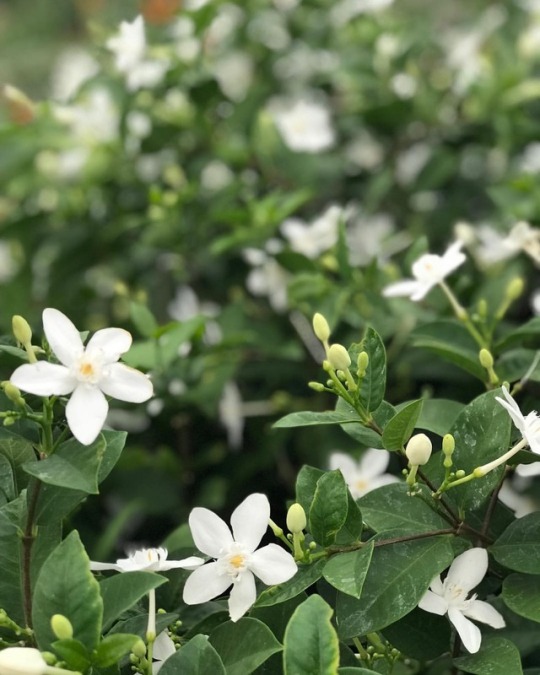
🌿White Jasmine Sambac (Arabian Jasmine)🌿 The White Jasmine has a lush foliage on vine-like growth and carries an intensely fragrance. It has little white flowers that open at night and close in the morning, fading to pink as they age. They can be used in containers near patios and entryways where the fragrance can be enjoyed. ☀️Partial to full sun 💦Water regularly to maintain evenly moist soil - weekly, or more. 📏Quickly reaches 6 to 8 ft. tall, 3 to 4 ft. wide, with support. 🌸Year-round in South Florida climate . . . #CasaplantaMiami #ComeGrowWithUs #WhiteJasmine #JasmineSomeBack #ArabianJasmine #Landscape #Flowers #Flower #Foliage #Plants #Nursery #Garden #GardenScape #nofilter #GardenCenter #Landscaping #Miami #SouthFlorida #Nursery (at Casaplanta Garden Center)
#nursery#flower#plants#casaplantamiami#garden#landscaping#foliage#nofilter#southflorida#gardencenter#arabianjasmine#whitejasmine#miami#jasminesomeback#landscape#gardenscape#flowers#comegrowwithus
0 notes
Photo
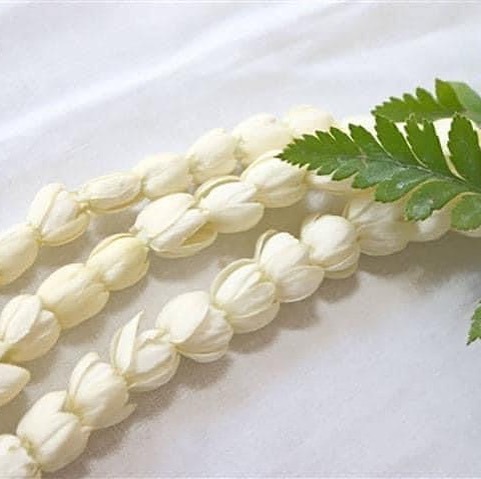
Pīkake is the Hawaiianization of the word for peacock. So how is the pīkake flower (jasminum sambac) associated with the flashy bird? Both the peacock and arabian jasmine, which was brought to Hawaiʻi from India, were the favorites of Princess Kaʻiulani. Hedges of pīkake could be found at her home, ʻĀinahau, in Waikīkī (near the present-day location of the hotel bearing her name). Pīkake grows well in full sunlight and in well-drained soil. It is a good xeriscape plant. Pruning helps the plant to flourish, and an effective “folk remedy” has been to strike the stalk at moonlight to invigorate its growth, especially its blossoming. Besides being a favorite lei of many here in Hawaiʻi, the pīkake is also the national flower of the Philippines known there as the “sampaguita.” In Thailand, huge ropes of pīkake, called “phuang malai,” can be purchased on the streets as offerings, or kept for good luck. Credit to (Kehau Woolsey for the info and post.) https://www.instagram.com/p/CPth5-9rlRV8HjHj2NDv5kUUfgq7CtLeH9m1kw0/?utm_medium=tumblr
0 notes